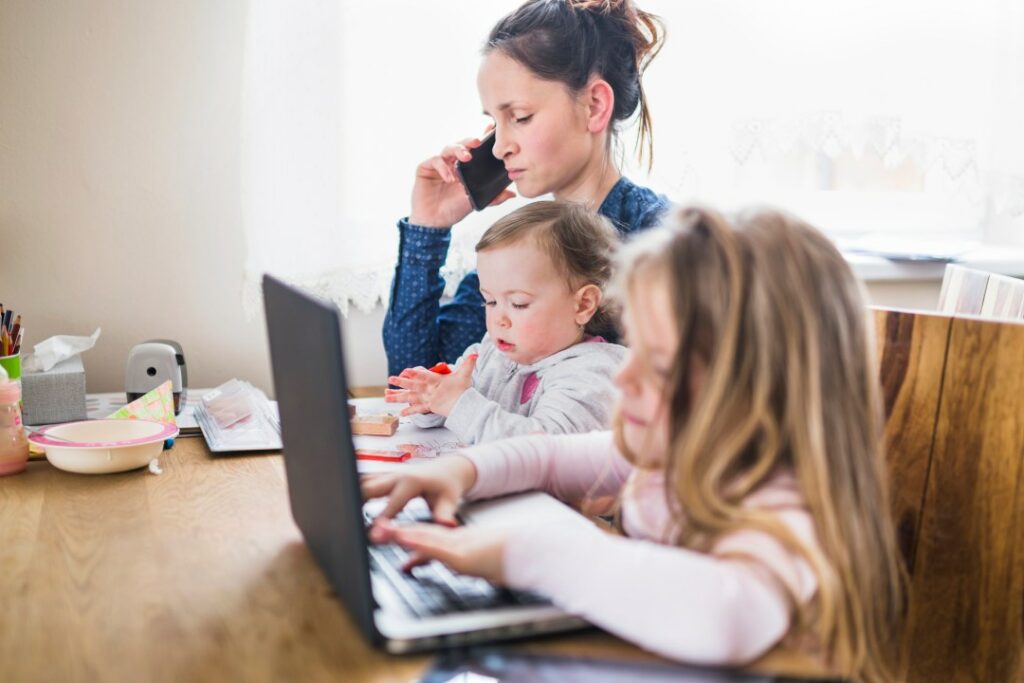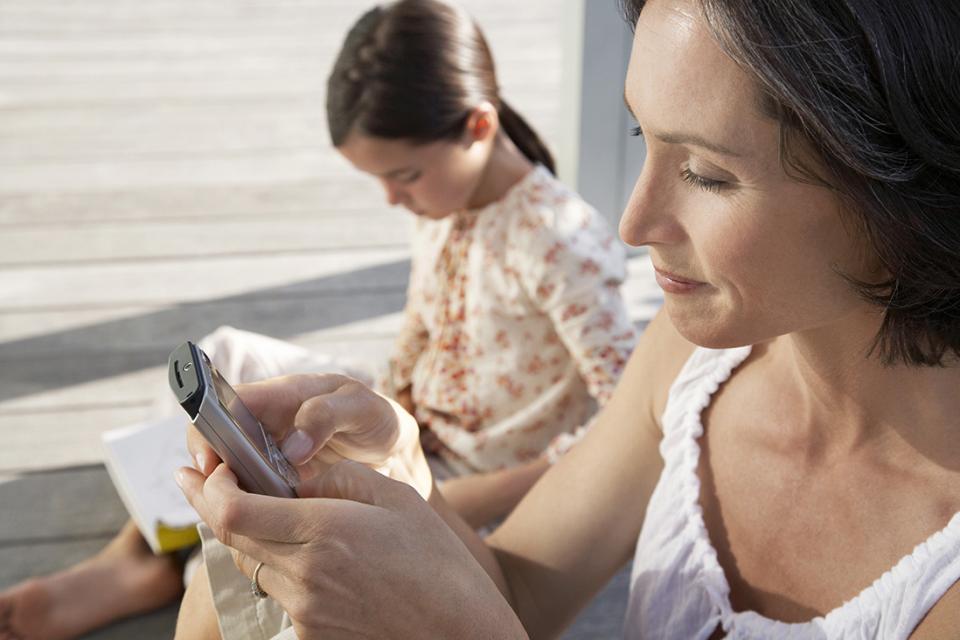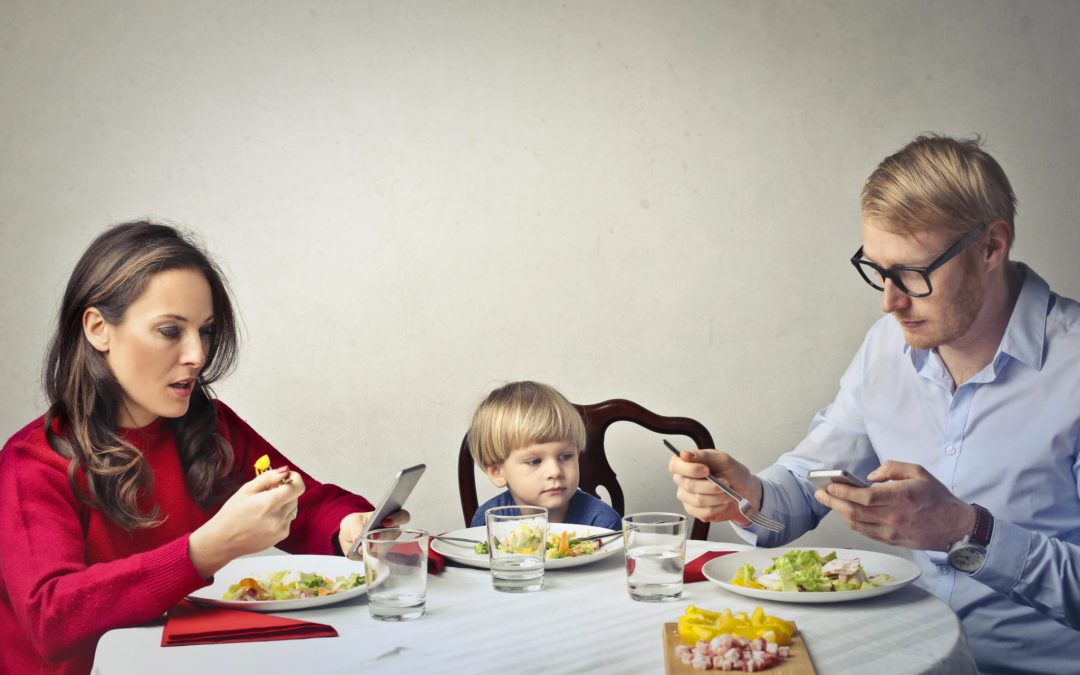The Dangers of Distracted Parenting
(Translated from The Dangers of Distracted Parenting by www.theatlantic.com)
When it comes to children’s development, parents should worry less about kids’ screen time—and more about their own.
Smartphones have by now been implicated in so many crummy outcomes—car fatalities, sleep disturbances, empathy loss, relationship problems, failure to notice a clown on a unicycle—that it almost seems easier to list the things they don’t mess up than the things they do. Our society may be reaching peak criticism of digital devices.
Even so, emerging research suggests that a key problem remains underappreciated. It involves kids’ development, but it’s probably not what you think. More than screen-obsessed young children, we should be concerned about tuned-out parents.
Yes, parents now have more face time with their children than did almost any parents in history. Despite a dramatic increase in the percentage of women in the workforce, mothers today astoundingly spend more time caring for their children than mothers did in the 1960s. But the engagement between parent and child is increasingly low-quality, even ersatz. Parents are constantly present in their children’s lives physically, but they are less emotionally attuned. To be clear, I’m not unsympathetic to parents in this predicament. My own adult children like to joke that they wouldn’t have survived infancy if I’d had a smartphone in my clutches 25 years ago.

To argue that parents’ use of screens is an underappreciated problem isn’t to discount the direct risks screens pose to children: Substantial evidence suggests that many types of screen time (especially those involving fast-paced or violent imagery) are damaging to young brains. Today’s preschoolers spend more than four hours a day facing a screen. And, since 1970, the average age of onset of “regular” screen use has gone from 4 years to just four months.
Some of the newer interactive games kids play on phones or tablets may be more benign than watching TV (or YouTube), in that they better mimic children’s natural play behaviors. And, of course, many well-functioning adults survived a mind-numbing childhood spent watching a lot of cognitive garbage. (My mother—unusually for her time—prohibited Speed Racer and Gilligan’s Island on the grounds of insipidness. That I somehow managed to watch every single episode of each show scores of times has never been explained.) Still, no one really disputes the tremendous opportunity costs to young children who are plugged in to a screen: Time spent on devices is time not spent actively exploring the world and relating to other human beings.
Yet for all the talk about children’s screen time, surprisingly little attention is paid to screen use by parents themselves, who now suffer from what the technology expert Linda Stone more than 20 years ago called “continuous partial attention.” This condition is harming not just us, as Stone has argued; it is harming our children. The new parental-interaction style can interrupt an ancient emotional cueing system, whose hallmark is responsive communication, the basis of most human learning. We’re in uncharted territory.
Child-development experts have different names for the dyadic signaling system between adult and child, which builds the basic architecture of the brain. Jack P. Shonkoff, a pediatrician and the director of Harvard’s Center on the Developing Child, calls it the “serve and return” style of communication; the psychologists Kathy Hirsh-Pasek and Roberta Michnick Golinkoff describe a “conversational duet.” The vocal patterns parents everywhere tend to adopt during exchanges with infants and toddlers are marked by a higher-pitched tone, simplified grammar, and engaged, exaggerated enthusiasm. Though this talk is cloying to adult observers, babies can’t get enough of it. Not only that: One study showed that infants exposed to this interactive, emotionally responsive speech style at 11 months and 14 months knew twice as many words at age 2 as ones who weren’t exposed to it.
Child development is relational, which is why, in one experiment, nine-month-old babies who received a few hours of Mandarin instruction from a live human could isolate specific phonetic elements in the language while another group of babies who received the exact same instruction via video could not. According to Hirsh-Pasek, a professor at Temple University and a senior fellow at the Brookings Institution, more and more studies are confirming the importance of conversation. “Language is the single best predictor of school achievement,” she told me, “and the key to strong language skills are those back-and-forth fluent conversations between young children and adults.”
A problem therefore arises when the emotionally resonant adult–child cueing system so essential to early learning is interrupted—by a text, for example, or a quick check-in on Instagram. Anyone who’s been mowed down by a smartphone-impaired stroller operator can attest to the ubiquity of the phenomenon. One consequence of such scenarios has been noted by an economist who tracked a rise in children’s injuries as smartphones became prevalent. (AT&T rolled out smartphone service at different times in different places, thereby creating an intriguing natural experiment. Area by area, as smartphone adoption rose, childhood ER visits increased.) These findings attracted a decent bit of media attention to the physical dangers posed by distracted parenting, but we have been slower to reckon with its impact on children’s cognitive development. “Toddlers cannot learn when we break the flow of conversations by picking up our cell phones or looking at the text that whizzes by our screens,” Hirsh-Pasek said.
In the early 2010s, researchers in Boston surreptitiously observed 55 caregivers eating with one or more children in fast-food restaurants. Forty of the adults were absorbed with their phones to varying degrees, some almost entirely ignoring the children (the researchers found that typing and swiping were bigger culprits in this regard than taking a call). Unsurprisingly, many of the children began to make bids for attention, which were frequently ignored. A follow-up study brought 225 mothers and their approximately 6-year-old children into a familiar setting and videotaped their interactions as each parent and child were given foods to try. During the observation period, a quarter of the mothers spontaneously used their phone, and those who did initiated substantially fewer verbal and nonverbal interactions with their child.
Yet another rigorously designed experiment, this one conducted in the Philadelphia area by Hirsh-Pasek, Golinkoff, and Temple’s Jessa Reed, tested the impact of parental cell phone use on children’s language learning. Thirty-eight mothers and their 2-year-olds were brought into a room. The mothers were then told that they would need to teach their children two new words (blicking, which was to mean “bouncing,” and frepping, which was to mean “shaking”) and were given a phone so that investigators could contact them from another room. When the mothers were interrupted by a call, the children did not learn the word, but otherwise they did. In an ironic coda to this study, the researchers had to exclude seven mothers from the analysis, because they didn’t answer the phone, “failing to follow protocol.” Good for them!

It has never been easy to balance adults’ and children’s needs, much less their desires, and it’s naive to imagine that children could ever be the unwavering center of parental attention. Parents have always left kids to entertain themselves at times—“messing about in boats,” in a memorable phrase from The Wind in the Willows, or just lounging aimlessly in playpens. In some respects, 21st-century children’s screen time is not very different from the mother’s helpers every generation of adults has relied on to keep children occupied. When parents lack playpens, real or proverbial, mayhem is rarely far behind. Caroline Fraser’s recent biography of Laura Ingalls Wilder, the author of Little House on the Prairie, describes the exceptionally ad hoc parenting style of 19th-century frontier parents, who stashed babies on the open doors of ovens for warmth and otherwise left them vulnerable to “all manner of accidents as their mothers tried to cope with competing responsibilities.” Wilder herself recounted a variety of near-calamities with her young daughter, Rose; at one point she looked up from her chores to see a pair of riding ponies leaping over the toddler’s head.
Occasional parental inattention is not catastrophic (and may even build resilience), but chronic distraction is another story. Smartphone use has been associated with a familiar sign of addiction: Distracted adults grow irritable when their phone use is interrupted; they not only miss emotional cues but actually misread them. A tuned-out parent may be quicker to anger than an engaged one, assuming that a child is trying to be manipulative when, in reality, she just wants attention. Short, deliberate separations can of course be harmless, even healthy, for parent and child alike (especially as children get older and require more independence). But that sort of separation is different from the inattention that occurs when a parent is with a child but communicating through his or her non engagement that the child is less valuable than an email. A mother telling kids to go out and play, a father saying he needs to concentrate on a chore for the next half hour—these are entirely reasonable responses to the competing demands of adult life. What’s going on today, however, is the rise of unpredictable care, governed by the beeps and enticements of smartphones. We seem to have stumbled into the worst model of parenting imaginable—always present physically, thereby blocking children’s autonomy, yet only fitfully present emotionally.
Fixing the problem won’t be easy, especially given that it is compounded by dramatic changes in education. More young children than ever (about two-thirds of 4-year-olds) are in some form of institutional care, and recent trends in early-childhood education have filled many of their classrooms with highly scripted lessons and dull, one-sided “teacher talk.” In such environments, children have few opportunities for spontaneous conversation.
One piece of good news is that young children are prewired to get what they need from adults, as most of us discover the first time our diverted gaze is jerked back by a pair of pudgy, reproaching hands. Young children will do a lot to get a distracted adult’s attention, and if we don’t change our behavior, they will attempt to do it for us; we can expect to see a lot more tantrums as today’s toddlers age into school. But eventually, children may give up. It takes two to tango, and studies from Romanian orphanages showed the world that there are limits to what a baby brain can do without a willing dance partner. The truth is, we don’t really know how much our kids will suffer when we fail to engage.
Of course, adults are also suffering from the current arrangement. Many have built their daily life around the miserable premise that they can always be on—always working, always parenting, always available to their spouse and their own parents and anyone else who might need them, while also staying on top of the news, while also remembering, on the walk to the car, to order more toilet paper from Amazon. They are stuck in the digital equivalent of the spin cycle.
Under the circumstances, it’s easier to focus our anxieties on our children’s screen time than to pack up our own devices. I understand this tendency all too well. In addition to my roles as a mother and a foster parent, I am the maternal guardian of a middle-aged, overweight dachshund. Being middle-aged and overweight myself, I’d much rather obsess over my dog’s caloric intake, restricting him to a grim diet of fibrous kibble, than address my own food regimen and relinquish (heaven forbid) my morning cinnamon bun. Psychologically speaking, this is a classic case of projection—the defensive displacement of one’s failings onto relatively blameless others. Where screen time is concerned, most of us need to do a lot less projecting.
If we can get a grip on our “technoference,” as some psychologists have called it, we are likely to find that we can do much more for our children simply by doing less—regardless of the quality of their schooling and quite apart from the number of hours we devote to them. Parents should give themselves permission to back off from the suffocating pressure to be all things to all people. Put your kid in a playpen, already! Ditch that soccer-game appearance if you feel like it. Your kid will be fine. But when you are with your child, put down your damned phone.
From Theatlantic.com











